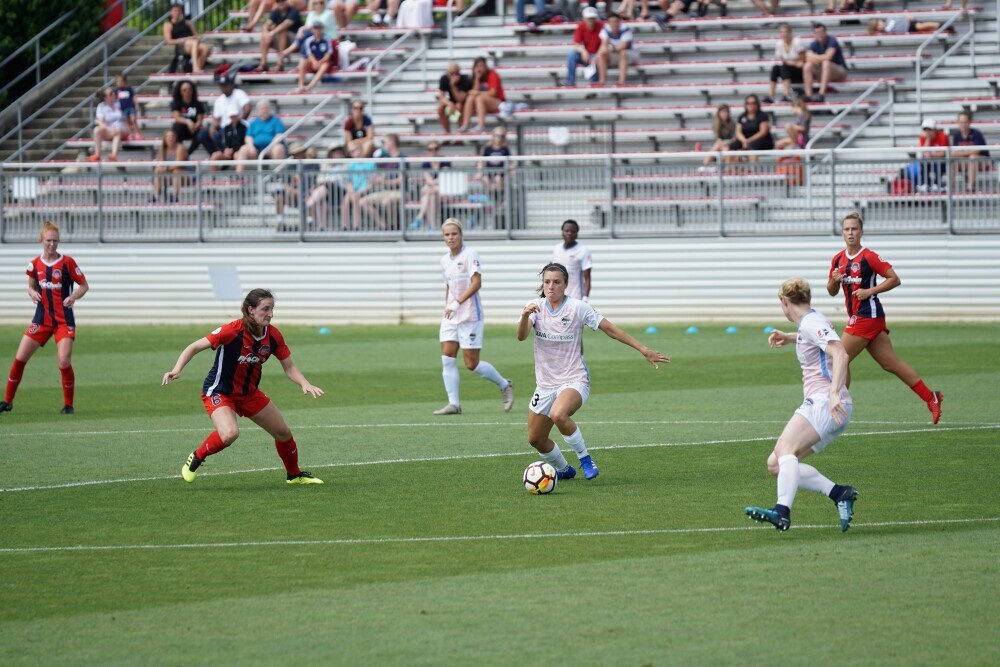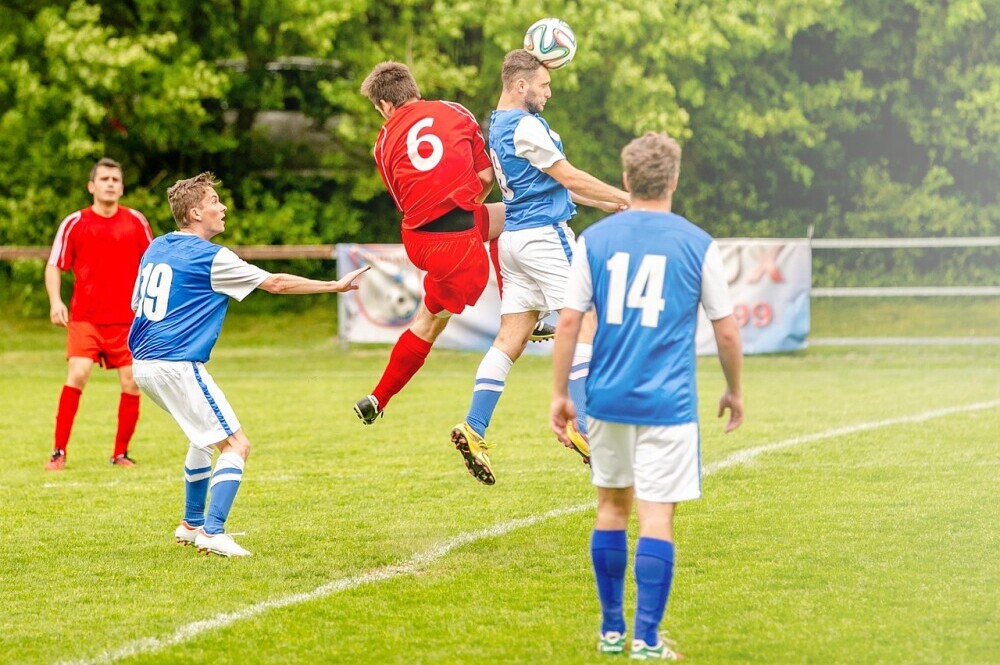In modern soccer, pressing is a fundamental tactical strategy used by teams to regain possession quickly and disrupt the opponent’s play.
Pressing zones refer to specific areas on the field where a team applies pressure to the ball carrier and forces them into mistakes, typically leading to turnovers and counter-attacking opportunities.
By understanding and mastering pressing zones, teams can develop a highly effective and aggressive defensive strategy that limits the opponent’s offensive options and creates scoring opportunities.
In this comprehensive analysis, we will delve into the various pressing zones, their key characteristics, benefits, challenges, and how teams can utilize them effectively.
We’ll also explore common mistakes when implementing pressing zones and provide tactical tips for coaches and players to improve their pressing strategies.
Key Pressing Zones in Soccer
Pressing zones are typically categorized into three main areas on the field: the high press, mid-block press, and low press.
Each zone requires different levels of intensity, fitness, and tactical coordination to be effective. Let’s break down each of these zones in more detail.
1. High Press (Pressing in the Final Third)
The high press, also known as full-field pressing or a “high press,” involves applying pressure to the opposition as they attempt to build play in their own half, usually near their defensive third.
The aim is to win the ball back as high up the field as possible, forcing the opposition into making mistakes close to their goal.
Objective of a High Press:
- Regain possession quickly: The primary goal is to win the ball back immediately after losing it and capitalize on the opponent’s disorganization.
- Create counter-attacking opportunities: By regaining possession in dangerous areas, a team can launch fast, dynamic counter-attacks before the opposition has time to recover.
Benefits of a High Press:
- It disrupts the opponent’s rhythm, forcing them to play hurried passes or clearances.
- Creates scoring chances through turnovers in the final third.
- The pressure on the opposition forces mistakes that often lead to goal-scoring opportunities.
Challenges of a High Press:
- It demands high fitness levels and stamina, as players must maintain intense pressing for long periods.
- It requires excellent tactical awareness to avoid leaving gaps in the defensive shape.
- If the press is broken, the team is exposed to counter-attacks, especially if defenders are too high up the field.
2. Mid-Block Press (Pressing in the Midfield)
The mid-block press is employed when the team presses the opponent in the midfield area, typically when they are in possession around the center of the pitch. This strategy aims to disrupt the opponent’s passing lanes, forcing them to make riskier passes or play longer balls that are easier to intercept.
Objective of a Mid-Block Press:
- Disrupt passing lanes: By closing down the central spaces, the team can prevent the opponent from building through the middle and force them into playing less effective passes.
- Force long balls: The pressing team forces the opponent into playing long balls, which are less accurate and harder to control.
Benefits of a Mid-Block Press:
- It is less physically demanding than the high press and requires less intensity.
- Can be more effective in slowing down the opponent’s build-up play and disrupting their rhythm.
- Allows the pressing team to retain a solid defensive shape and maintain control of the game.
Challenges of a Mid-Block Press:
- The pressing team must balance pressing and maintaining defensive structure, as excessive pressing in the midfield could leave gaps in the defense.
- The opponent may be able to bypass the press with quick, direct passes or long balls to wide areas.
- Requires strong communication to ensure players are positioned correctly and are not caught out of position.
3. Low Press (Pressing in the Defensive Third)
The low press, often referred to as a “low block,” involves pressing the opposition in the defensive third, near the goal.
This strategy is typically used when the team is under pressure or facing an opponent with high possession.
The goal is to prevent the opponent from building play from the back and to force them to play long, inaccurate passes that can be intercepted.
Objective of a Low Press:
- Prevent the opponent from building from the back: This forces the opposition to bypass the press by playing long balls or making more predictable passes.
- Regain possession in defensive areas: By pressing high in the defensive third, the team can win the ball back in dangerous areas close to the opponent’s goal.
Benefits of a Low Press:
- The low press allows teams to absorb pressure and block passing lanes, effectively defending their own half.
- It helps teams stay organized defensively, preventing the opponent from having easy access to dangerous areas.
- Forces the opponent to rely on long balls, which are often inaccurate and easier to defend.
Challenges of a Low Press:
- It can be ineffective if the opponent is able to break the press with accurate long balls or wide play.
- This type of pressing can be tiring for players, as they spend more time in their own half defending.
- If the team does not press with enough intensity, it allows the opponent to build momentum and create goal-scoring opportunities.
Factors to Consider When Implementing Pressing Zones
Successfully implementing pressing zones requires more than just a willingness to press.
Teams must consider several factors to ensure the pressing strategy is effective and sustainable:
1. Team Fitness
Pressing is a physically demanding task. Players must have the stamina, speed, and endurance to press effectively for extended periods.
High-intensity pressing requires players to maintain a high level of fitness throughout the game to ensure they can maintain the intensity without fatigue.
To accurately monitor pressing intensity and physical output, coaches and players can use advanced tools like the STATSports Apex Athlete Series GPS Tracker.
This wearable tracks sprint distances, recovery metrics, and heatmaps — offering insights into how well players are sustaining their pressing efforts across zones.
It’s especially useful for tailoring training loads and ensuring peak performance on match day.
2. Tactical Awareness
Players must understand when and where to press and when to back off.
This awareness includes reading the game, anticipating the opponent’s next move, and knowing when to press as a team or when to drop into a more defensive shape.
3. Communication
Effective communication is essential for successful pressing.
Players must be able to communicate quickly to switch between different pressing strategies or adjust to changes in the opposition’s play.
4. Defensive Shape
A team’s defensive shape must remain compact and organized to ensure that pressing is effective.
If there are too many gaps in the team’s shape, the press can be bypassed, allowing the opponent to exploit space.
5. Flexibility
Teams must be adaptable when applying pressing strategies.
Depending on the opponent’s strengths and weaknesses, it may be necessary to switch between high, mid, and low pressing strategies throughout the game.
If you’re a coach or serious player looking to better understand these tactical nuances, I highly recommend “Soccer Systems and Strategies” by Jens Bangsbo. This book breaks down the mechanics of various pressing formations and defensive systems used by elite teams. It’s a great resource to reinforce the concepts discussed here and offers drills and setups for practical implementation.
Common Pressing Mistakes to Avoid
While pressing can be an effective strategy, there are several common mistakes that teams can make when implementing pressing zones. Here are some of the most important mistakes to avoid:
1. Overcommitting to Pressing
Pressing too aggressively or committing too many players to the press can leave the team vulnerable to counter-attacks. If the press is bypassed, the opposition can exploit the spaces left behind, creating goal-scoring opportunities.
2. Poor Communication
Lack of communication between players can result in gaps in the press, making it easier for the opposition to escape pressure. Proper communication ensures that players work together, creating a more effective and cohesive press.
3. Lack of Discipline
Pressing requires tactical discipline. Players must remain patient and disciplined, avoiding reckless tackles or fouls that give the opponent a chance to reset.
4. Ineffective Recovery Runs
After pressing, players need to make quick recovery runs to ensure the team remains organized. Failure to recover properly can leave spaces that the opposition can exploit.
To identify these mistakes in real game situations, video analysis is key. Recording your matches or training sessions allows players and coaches to evaluate positioning, pressing intensity, and spacing in each pressing zone.
I recommend using a high-quality tool like the GoPro HERO12 + Chest Mount Bundle. It’s portable, easy to set up, and perfect for capturing high-definition footage from multiple angles — whether mounted on a coach, player, or stationary tripod.
Conclusion
Understanding pressing zones is crucial for modern soccer teams aiming to disrupt their opponent’s build-up play, regain possession, and create counter-attacking opportunities.
By implementing high, mid, and low presses strategically, teams can neutralize opposing threats and dominate possession.
Pressing requires high fitness levels, tactical awareness, effective communication, and discipline to be successful.
Teams that master the art of pressing can gain a significant competitive advantage, dictating the tempo of the game and limiting the opponent’s ability to build effective attacks.
By honing their pressing strategy, teams can enhance their defensive and offensive capabilities, contributing to better overall performance.
Happy soccer season!!!!!!!!
Here’s a little transparency: Our website contains Amazon affiliate links. This means if you click and make a purchase, we may receive a small commission. Don’t worry, there’s no extra cost to you. It’s a simple way you can support our mission to bring you quality content.”



2 Responses
This article provides a great breakdown of pressing zones in soccer, which is such a pivotal aspect of modern tactics. I’m curious, though, how do you think pressing strategies might differ between teams that have a high fitness level versus those with less stamina? Also, do you think pressing works better with certain formations, or can it be applied universally across different systems? Would love to hear others’ thoughts on how pressing has impacted their favorite teams!
Hi Zachary,
Thanks so much for your insightful comment.
I’m really glad you enjoyed the article. You bring up two excellent points.
When it comes to fitness levels, teams with higher stamina can maintain a more aggressive and sustained press across the whole field, often using a high block to pressure opponents deep in their own half.
Teams with lower stamina might need to be more selective, pressing in specific zones (like midfield traps) or using “trigger” moments to conserve energy while still disrupting the opponent’s rhythm.
As for formations, pressing can be adapted across different systems, but some formations like the 4-3-3 or 3-5-2 lend themselves naturally to coordinated pressing because they offer better coverage of width and midfield density.
A well-drilled team can certainly press effectively in almost any setup—it just requires clear communication and a shared understanding of pressing cues.
I’d love to hear more from others too—pressing really has transformed how many teams play, and it’s fascinating to see the different styles develop!
Thanks again for sparking such a great discussion, Zachary!